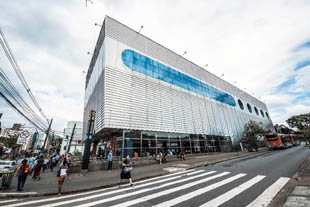Metrô, história e espaço público
Um estudo sobre as estações no centro de São Paulo
DOI:
https://doi.org/10.24168/revistaprumo.v3i4.512Resumo
Este artigo investiga a relação entre arquitetura, infraestrutura e metrópole, através de estações do metrô de São Paulo implantadas em seu centro histórico. Nas extremidades do Vale do Anhangabaú, que cobre um importante eixo viário da cidade, as estações São Bento e Anhangabaú foram implantadas em largos, pequenas praças públicas. O trabalho percorre o processo histórico do centro junto à construção dessas estações, relacionando-as diretamente com a cidade, física e simbolicamente. Dessa forma, procede uma interlocução entre a construção da rede no âmbito do planejamento e o desenho de projeto que conformaram as obras finais das estações, desde o interior subterrâneo até as transformações no entorno. O trabalho retoma o lugar da infraestrutura de circulação na evolução urbana da cidade e as potencialidades e perdas desses equipamentos como arquitetura pública, tema central na busca pela dimensão urbana da arquitetura nas metrópoles contemporâneas.
Palavras-chave: Estações de metrô, São Paulo, infraestrutura, centro histórico, espaço público.
Esse trabalho faz parte da pesquisa de doutorado em andamento na USP com financiamento da FAPESP – Fundação de Amparo à Pesquisa do Estado de São Paulo.







